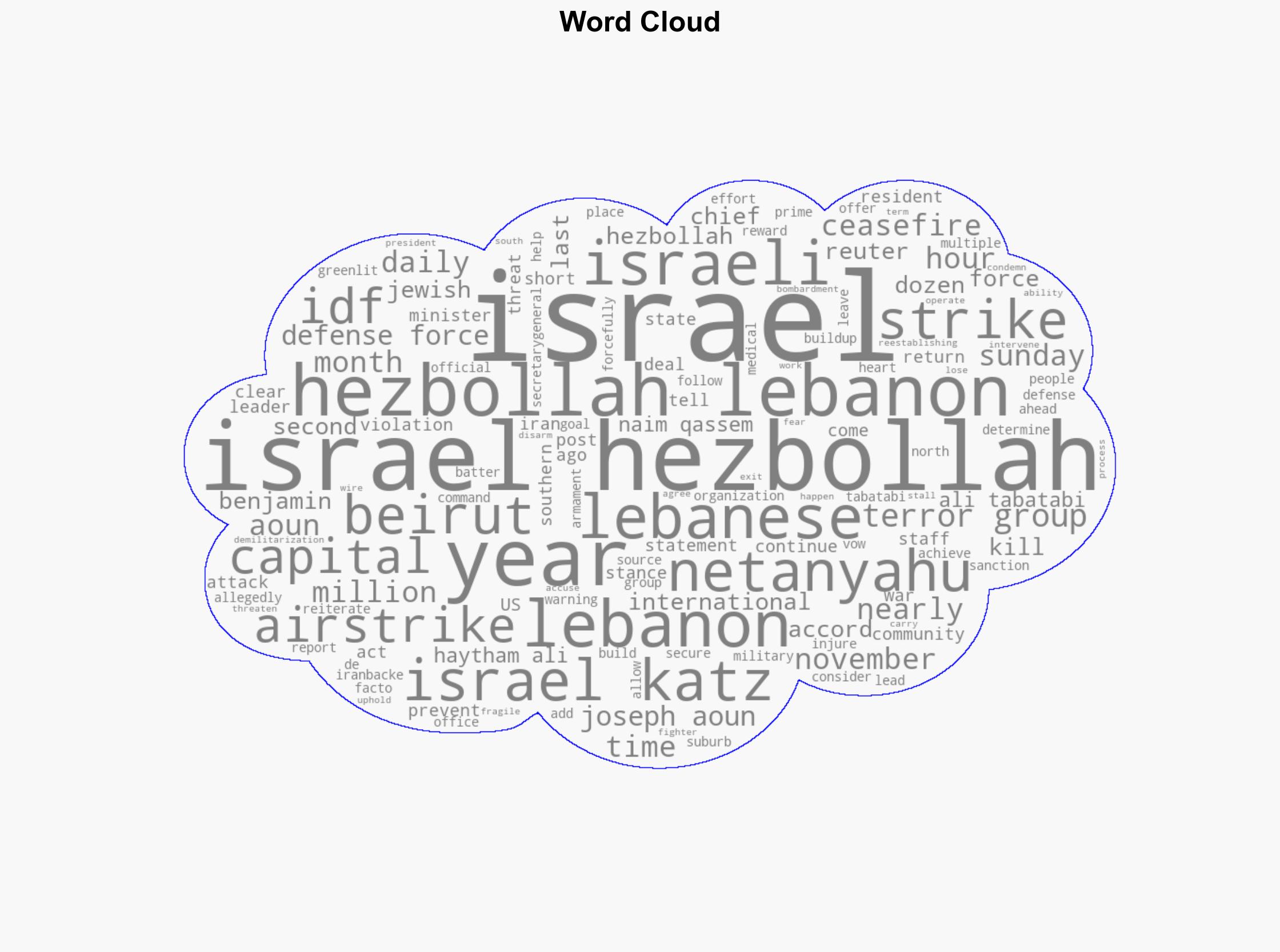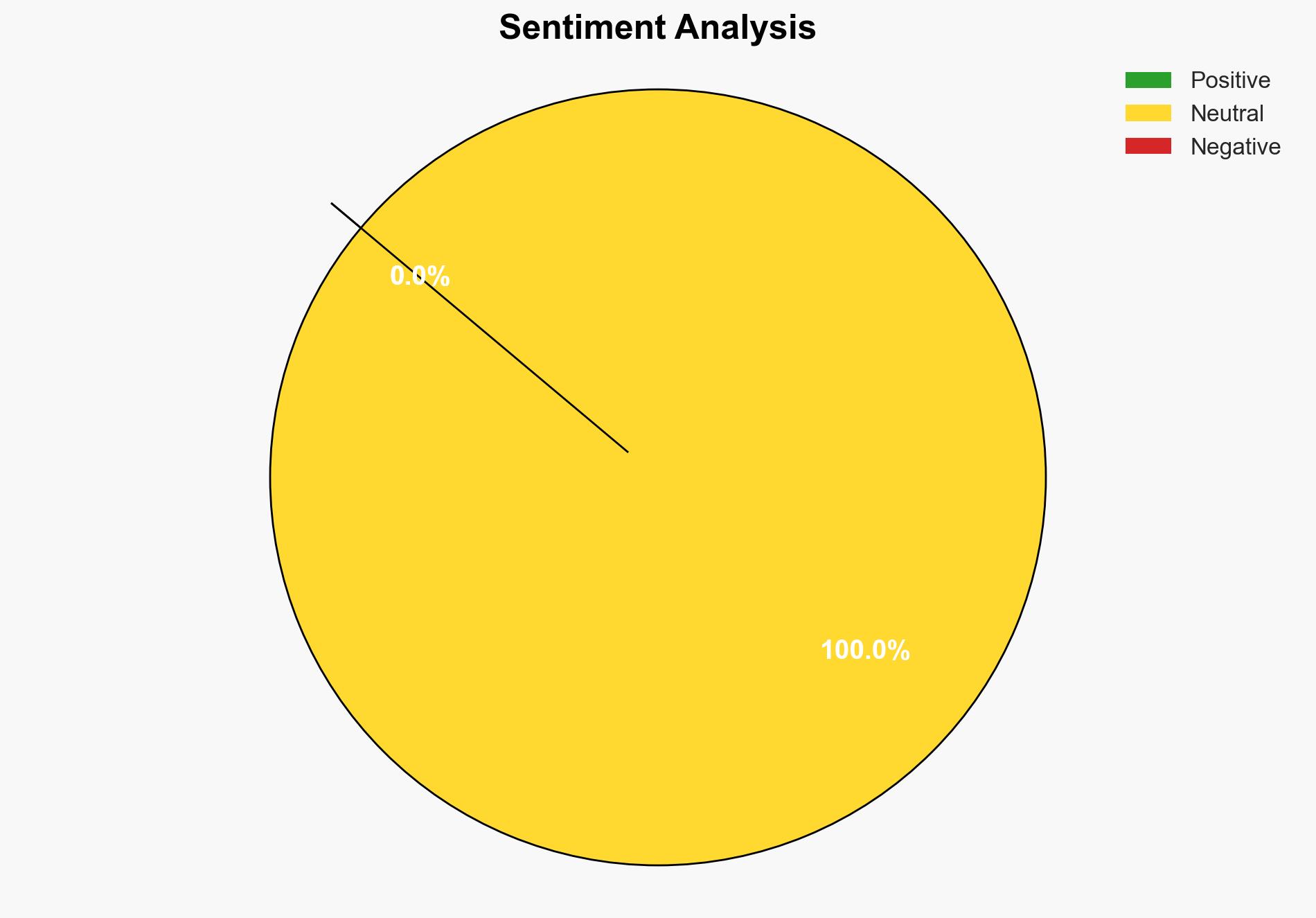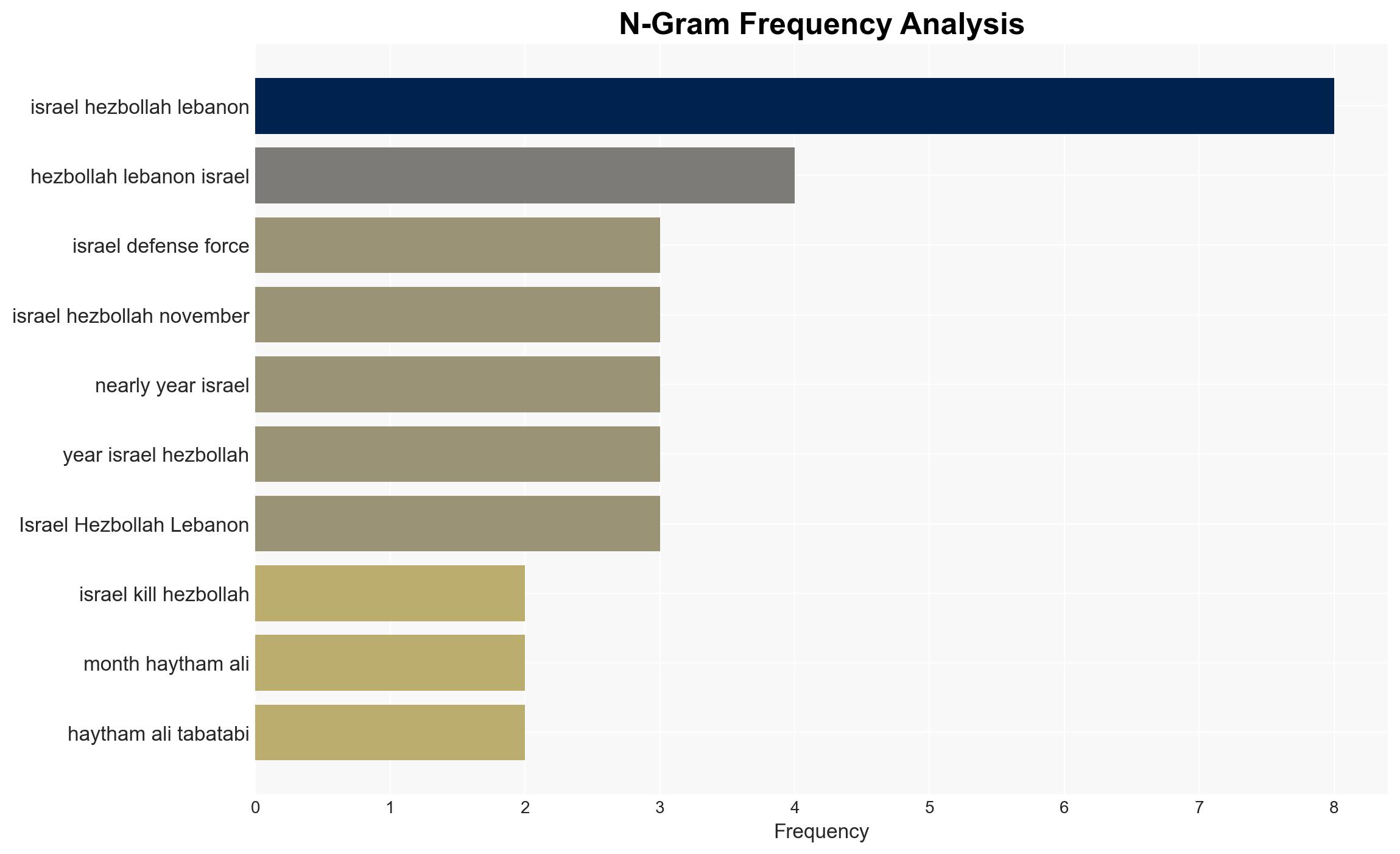Israeli says it killed Hezbollahs no 2 leader in Lebanon airstrike
Published on: 2025-11-23
AI-powered OSINT brief from verified open sources. Automated NLP signal extraction with human verification. See our Methodology and Why WorldWideWatchers.
Intelligence Report:
1. BLUF (Bottom Line Up Front)
With moderate confidence, the most supported hypothesis is that Israel’s airstrike on Hezbollah’s leadership in Lebanon is a strategic move to prevent Hezbollah’s military resurgence and deter future threats to Israeli security. Recommended action includes diplomatic engagement to de-escalate tensions and reinforce ceasefire agreements.
2. Competing Hypotheses
Hypothesis 1: The airstrike is a preemptive measure by Israel to disrupt Hezbollah’s military buildup and prevent imminent threats to its national security.
Hypothesis 2: The airstrike is a strategic maneuver by Israel to provoke Hezbollah into a conflict, thereby justifying further military actions and consolidating regional power.
Hypothesis 1 is more likely given Israel’s historical pattern of targeting Hezbollah’s military capabilities to ensure its security, as well as public statements from Israeli leadership emphasizing defense over aggression.
3. Key Assumptions and Red Flags
Assumptions: Israel’s intelligence on Hezbollah’s activities is accurate and actionable. Hezbollah’s response will be measured and not escalate into full-scale conflict.
Red Flags: Potential misinformation regarding the identity and rank of the targeted individual. Possible exaggeration of Hezbollah’s threat level to justify military action.
4. Implications and Strategic Risks
The airstrike risks escalating into broader conflict, potentially drawing in regional actors and destabilizing Lebanon further. Politically, it may strain Israel’s relations with international partners advocating for peace. Economically, increased military activity could disrupt regional trade routes. Informationally, both sides may engage in propaganda to sway public opinion.
5. Recommendations and Outlook
- Engage in diplomatic channels to de-escalate tensions and reinforce ceasefire agreements.
- Monitor Hezbollah’s movements and communications for signs of retaliation.
- Best-case scenario: Successful de-escalation and reinforcement of ceasefire agreements.
- Worst-case scenario: Escalation into a broader conflict involving regional actors.
- Most-likely scenario: Limited skirmishes and heightened tensions without full-scale conflict.
6. Key Individuals and Entities
Benjamin Netanyahu, Haytham Ali Tabatabi, Naim Qassem, Joseph Aoun, Israel Defense Forces (IDF), Hezbollah.
7. Thematic Tags
Structured Analytic Techniques Applied
- Cognitive Bias Stress Test: Expose and correct potential biases in assessments through red-teaming and structured challenge.
- Bayesian Scenario Modeling: Use probabilistic forecasting for conflict trajectories or escalation likelihood.
- Network Influence Mapping: Map relationships between state and non-state actors for impact estimation.
Explore more:
National Security Threats Briefs ·
Daily Summary ·
Support us





